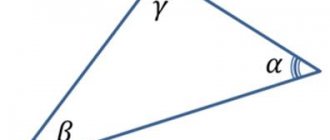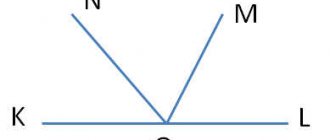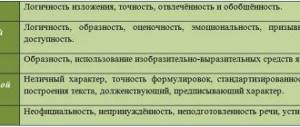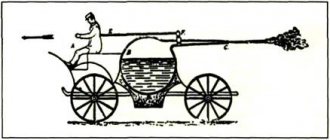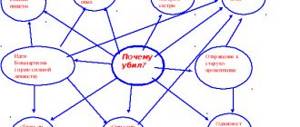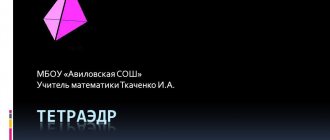Geometry problems for review, grade 7
Problems on the topic “Isosceles triangle”
1. In triangle ABC, angles BAC and BCA are equal, their bisectors AA1 and CC1 intersect at point O. Prove that triangle AOC is isosceles.
2. Find the perimeter of triangle ABC if its two angles are equal and its two sides have lengths of 40 cm and 20 cm.
3. In triangle ABC, angle B = 1200, and angle A = 300. Point D belongs to side AC, and angle BDC is obtuse. Prove that AB is BD.
4. The difference in the lengths of the two sides of an isosceles obtuse triangle is 4 cm, and its perimeter is 19 cm. Find the lengths of the sides of the triangle.
5. In an isosceles triangle ABC, angle B is obtuse. The height of ВD is 4 cm. Find the perimeter of triangle ABC if the perimeter of triangle АВD is 12 cm.
6. In triangle ABC, the external angles at vertices A and C are equal. Find the length of the bisector ВD if the perimeter of triangle ABC is 72 cm, and the perimeter of triangle АВD is 48 cm.
Problems on the topic “Tests for the equality of triangles”
1. Point O is taken at altitude AN of an isosceles triangle with angle A=900. Prove that triangles BON and NOS are equal.
2. In the triangle KMR KM=MR. Points A and B are the midpoints of sides KM and MP, respectively. AC and ВD are perpendicular to straight line КР. Prove that triangles KAS and DBP are congruent.
3. Given equilateral triangles ABC and A1B1C1 points O and O1 are the points of intersection of the heights of these triangles, and OA = O1A1. Prove that triangles ABC and A1B1C1 are congruent.
4. Triangle ABC is equilateral. AC – base. Points K, L, M are the midpoints of sides AB, BC and AC, respectively. Prove that triangles AKM and MLC are congruent.
5. Given triangles ABC, with height CH, and KMN with height NL. Moreover, angle B=600, angle M=600, CH=LN and AB=KM. Prove that triangles ABC and KMN are congruent.
6. In an isosceles triangle ABC, VC is the median drawn to the base. Points M and N belong to the lateral sides. Beam HF is the bisector of the angle MKN. Prove that AM=NC.
Problems on the topic “Circle”
1. In a circle with center O, radii OK, OM, ON are drawn, such that the angles KOM and MON are equal. Prove that triangles KOM and MON are equal.
2. In a circle with center O, the diameter AC is perpendicular to the radius OB. Prove that AB=BC.
3. In a circle with center O, two non-parallel chords KM and RN are drawn, and KM = PN. Point A is the middle of the CM, point B is the middle of P N . Prove that triangle AOB is isosceles.
Problems on the topic “Adjacent and vertical angles”
1. One of the angles formed at the intersection of two straight lines is equal to 480. Find the remaining angles.
2. Given a triangle ABC. On the continuation of sides AB and BC beyond vertex B, points K and M are marked, respectively. Angle KVM=300 Angle A is 3 times larger than angle C. Find the angle adjacent to angle C.
3. On a circle with center O, points A, B, C, D, K are successively marked so that points A and K are the ends of the diameter, angles AOC and SOC are equal. Angle AOB = 300, angle DOK = 600. Prove that BD=AC.
Problems on the topic “Parallel lines”
1. Segments KM and PL are the diameters of a certain circle. Prove that the lines KP and ML are parallel.
2. Points A and C lie on opposite sides of line BD. It is known that AB is parallel to DC and AD is parallel to BC. Prove that angle BAD is equal to angle DCB, AB=DC and AD=BC.
3. On the bisector CD of the isosceles triangle ABC, point M is taken. Through this point, lines are drawn parallel to the sides AC and BC and intersecting the base AB at points H and K. Prove that AN = KB.
4. Points A and B are taken on sides MP and PN of triangle MPN, respectively. Angle PMN is equal to angle RAB and is equal to 600, angle MNP is equal to 500. Find what angle ABN is equal to.
5. In triangle ABC, angle A is equal to 300, angle C is equal to 1200. Prove that the bisector of the external angle at vertex C lies on a line parallel to line AB.
6. Points E and F are taken on one side of the undeveloped angle, on the other - G and H, so that EG is parallel to FH, point M belongs to the segment EG, angle MFE is equal to angle MFH, angle MHF is equal to MHG. Prove that EG= EF+GH.
First geometry lessons in 7th grade
4. Various straight lines
intersect at point
A.
Line a passes through
point
D. Does it pass through point D
straight
from
? Explain your answer.
Solution. Direct from
does not pass through point
B,
since two different lines can intersect only at one point
(by basic property
.
5. One of two intersecting lines passes through point A,
belonging to another line.
Are point A
and the point of intersection of these lines different? Explain your answer.
Solution. These points coincide, since two lines can intersect only at one point (according to the main property
I).
Dictation
The dictation is planned for 10 minutes. It is recommended to do it in the next lesson instead of checking homework.
1°. Draw a straight line, mark it in two ways.
2°. Draw a straight line a,
mark point C, which lies on line
a,
point
B,
which does not lie on line
a.
Draw a line c
passing
through point
B
and intersecting line
a.
Mark the point of intersection of the lines with the letter
P.
3. Draw a straight line a,
mark two points
A
and
B
lying on line
a.
to draw a straight line c
through points
A
and
B ,
different from straight line a? Explain your answer. (An additional task is included at the discretion of the teacher.)
3,4,5. Segment.Measurement of segments.
Half-planes (2 hours)
Starting from the point “Measuring segments”, it is necessary to gradually work on teaching students demonstrative reasoning, focusing on justifying the solution of problems, and requiring more precise geometric formulations from them.
2. To consolidate the terminology associated with describing the relative positions of points on a line, you can invite students to complete exercise 5 from the textbook, supplementing it with questions:
1) mark point B
so that point
B separates (lies between)
points
A
and
B;
2) mark point
P
so that point
P lies between (separates)
points
A
and
B.
Completing this exercise comes down to drawing on the board and in students’ notebooks according to the description of the situation given in the exercise, as well as to the subsequent oral description (pronunciation) of the situation according to drawing. If necessary, students' answers are clarified and corrected by the teacher. No records are made of the conditions of the problem and its conclusion.
3°. Formulating the main property of the relative position of points on a line (main property II), you should pay attention to the fact that this property contains two statements: the existence of a point (“Of three points on a line, one lies between two others”) and its uniqueness (“Of three points on a line only one lies between the other two").
4°. The formulations of a number of problems related to the measurement of segments in the textbook talk about three-points lying on the same straight line (Fig. 4). Direct application of the basic property of measuring segments (basic property III) in evidentiary reasoning leads to the loss of a monological step, namely: if one (point A)
of three points
(A, B
and C) the straight line lies between the other two (Fig. 8), then it belongs to the segment BC
therefore, according to the main property III: BC
Open lesson on geometry 7th grade “signs of equality of triangles”
Subject:
Repetition of the geometry course 7th grade. (tests for the equality of triangles)
Lesson objectives:
about educational :
organize student activities to apply knowledge when solving problems involving the use of triangle elements; signs of equality of triangles.
developing : _
— development of key competencies;
— development of research skills through the implementation of projects on the topic;
— formation of the ability to evaluate one’s own activities.
educational:
nurturing relationships of mutual assistance and cooperation between students in the process of cognitive activity; development of their independence and creativity.
Game "Lucky Chance"
During the classes
- I.
Organizational moment.
The class is divided into three teams, and a captain for each team is selected (all this must be completed before the start of the lesson). Each team sits down at its own round table. A knowledge record sheet is prepared on each table, in which the captains put a “+” next to each name if the student gave the correct answer. At the end of each game, “+” are calculated and placed in the “total” line.
- II.
Lesson motivation.
Who among you has not heard about the mysterious Bermuda Triangle, in which ships and planes disappear without a trace? (It is located in the Atlantic Ocean between Bermuda, the state of Puerto Rico and the Florida Peninsula).
But the triangle we all know is also fraught with a lot of interesting and mysterious things.
It's called a triangle
And a schoolboy won’t have any trouble with him!
General accounting sheet (located on the board)
| Game name | I team | II team | III team |
| Homework | |||
| Game I “Warm-up” | |||
| Game II “Find the mistake” | |||
| III game “Hurry up to see” | |||
| Game III “Troubles from a barrel” | |||
| IV game “You give me I give you” | |||
| Total |
PROGRESS OF THE GAME
Game I: “Warm-up”
Each group is asked questions in turn; if one group cannot answer the question, the right to answer passes to the other group.
- Explain what figure is called a triangle.
- What is the perimeter of a triangle?
- What segment is called the median of a triangle? How many medians does a triangle have?
- What segment is called the bisector of a triangle? How many bisectors does a triangle have?
- What segment is called the altitude of the triangle? How many heights does a triangle have?
- Which triangle is called isosceles?
- Which triangle is called equilateral?
- State the property of angles at the base of an isosceles triangle.
- Formulate the first criterion for the equality of triangles.
- Formulate the second criterion for the equality of triangles.
- Formulate the third criterion for the equality of triangles.
- Which triangle is called a right triangle?
- What is the longest side in a right triangle called?
- What are the sides that make up a right angle called?
- What is the sum of the angles in a triangle?
While the teams are answering questions, the team captains are solving a crossword puzzle at this time
| ||||||||
| 2 | ||||||||
| 5 | 1. A figure that consists of three points | |||||||
| 3 | not lying on the same straight line and three segments | |||||||
| connecting these points in pairs; | ||||||||
| 2. If two angles in a triangle are equal, | ||||||||
| then this triangle ... | ||||||||
| 1 | 3. Perpendicular drawn from a given | |||||||
| vertices of the triangle to the line containing | ||||||||
| the opposite side of the triangle; | ||||||||
| 4 | 4. A segment connecting a given vertex | |||||||
| from the middle of the opposite side | ||||||||
| triangle; | ||||||||
| 5. What is the median carried out | ||||||||
| to the base of an isosceles triangle. | ||||||||
Game II “Find the mistake”
Now the competition participants will receive a task. They need to find errors in statements and write down correct statements.
1 group
- Two isosceles triangles with the same bases are congruent.
- If we build an isosceles triangle, then all its angles are equal.
2nd group
- Once the sides of the triangle quarreled, one side fell to the left, the other to the right, and the triangle split into three straight lines.
- “Adjacent angles are equal to 90 degrees.”
3 group
- Two triangles are congruent if three angles of one triangle are respectively equal to three angles of the other triangle.
- The height of any triangle is inside the triangle.
III game “Hurry up to see”
1. For each group, drawings were prepared on the board, according to which representatives of the groups take turns proving the equality of the triangles.
For 1 group:
For group II:
For group III:
Physics minute butterfly ( presentation )
IV game “Troubles from a barrel”
Each group takes turns taking out a barrel with a number. The number contains the task with the finished drawing. For 2 - 3 minutes, the whole group discusses the solution to the problem, then representatives of the groups take turns coming to the board and showing the solution to this problem.
Among the barrels there is a happy one. The group that pulls out such a barrel receives 2 bonus points.
Geometry problems for repeating the 7th grade course
Problems for reviewing a geometry course in 7th grade
1) Find the values of adjacent angles if one of them is 5 times larger than the other. (30 and 50)
2) Segments MN
and
DK
intersect at their common midpoint B. Prove the equality of triangles
MDB
and
NKB
. (by 1 characteristic)
3) Find the perimeter of isosceles triangle ADC
with base
AD
, if
AD
= 7 cm,
DC
= 8 cm.(23)
4) Find the undeveloped angles formed at the intersection of two straight lines, if the sum of two of them is 126° (63 and 117)
5) Points M, N and R lie on the same line, MN = 11 cm, RN = 20 cm. Find the distance MR.(21 or 9)
6) The angle opposite to the base of an isosceles triangle is 50°. Find the size of the external angle at the base.(115)
7) Find the angles of the triangle into which the height divides the equilateral triangle. (30, 60 and 90)
 Find all the angles formed when two parallel lines intersect with a transversal, if one of them is equal to 42°. (42 and 138)
Find all the angles formed when two parallel lines intersect with a transversal, if one of them is equal to 42°. (42 and 138)
9) Find all the angles formed when two parallel lines intersect with a transversal, if one of them is 126°. (126 and 54)
10) Find adjacent angles if one of them is 55° greater than the other. (62.5 and 117.5)
11) The ray SR is the bisector of the angle S, and the segments SM and SN are equal. Prove the equality of triangles SMO and SNO.(1 sign)
12) Find the length of the segment AM and the degree measure of the angle ABK, if BM is the median and BK is the bisector of triangle ABC and it is known that AC = 17 cm, angle ABC is 84° (42° and 8.5 cm)
13) Segments AB
and
CM
intersect at point O. The ray
OK
is the bisector of the angle
MOB
.
Find angle MOK
if angle
AOM
is 86°.(47)
14) In triangle MOK
O = 76°, and the angle
M
is 3 times less than the external angle at the
vertex K. Find the unknown angles of the triangle.(38 and 114)
15) Find the angles at the base of MP
isosceles triangle
MOP,
if
MK
is its bisector and
OKM =
96°.(64)
16) Find all the angles formed when two parallel lines intersect with transversals, if one of them is 42°. (42 and 138)
17) Two external angles of a triangle at different vertices are equal. The perimeter of the triangle is 74 cm, and one of the sides is 16 cm. Find the other two sides of the triangle. (29 and 29)
18) In an isosceles triangle ABC with base BC, median AM is drawn. Find the median AM if the perimeter of triangle ABC is 32 cm and the perimeter of triangle ABM is 24 cm.(8)
19) The sum of crosswise angles at the intersection of two parallel lines by a transversal is 210. Find these angles. (110)
20) Find adjacent angles if one of them is 45 more than the other. (67.5 and 112.5)
21) One of the angles of a right triangle is 60, and the sum of the hypotenuse and the smaller of the legs is 26.4 cm. Find the hypotenuse of the triangle. (8.8 and 17.6)
22) The difference between two one-sided angles when two parallel lines intersect with a transversal is 50 degrees. Find these angles. (115 and 65)
23) Find the undeveloped angles formed by the intersection of two straight lines if the sum of two of them is 126°. (63 and 117)
24) The base of an isosceles triangle is 8 cm. The median drawn to the lateral side divides the triangle into two triangles so that the perimeter of one triangle is 2 cm greater than the perimeter of the other. Find the lateral side of the given triangle.(6 or 10)
25) In a right triangle ABC with right angle C, the external angle at vertex A is 120, AC + AB = 18 cm. Find AC and AB.(6 and 12)
26) Find all the angles formed by the intersection of two parallel lines a
and
in
a secant
with
, if one of the angles is 700 greater than the other. (105 and 65)
First geometry lesson in 7th grade
First geometry lesson in 7th grade “Get to know each other. Geometry".
Goals and objectives of the lesson:
- Educational
: introduce students to the history of the origin
geometry, with the founders of geometry, with basic geometric
concepts - point and line, with their designations, some
geometric shapes on a plane, repeat earlier
studied geometric material.
- Educational
: instilling interest in a subject through study
history and development of science, solving entertaining problems, developing the ability to accurately and competently perform mathematical notations.
Equipment:
computer, multimedia projector, presentation
“Get acquainted. Geometry”, made using Microsoft Power Point 2003.
Lesson plan.
- Introductory word from the teacher (slides No. 1, 2).
- Teacher's story about the history and development of geometry
(slide No. 3), about the founders of geometry (slide No. 4, 5).
- Repetition of famous geometric shapes (slide number 6).
- Introduction of basic geometric figures on a plane and problem solving (slides No. 7,8).
- A story about drawing tools needed in geometry lessons (slide number 9).
- Physical education minute (slide number 11).
- Consideration of geometric illusions (slides No. 12, 13, 14).
- Solving entertaining problems (slides No. 15, 16).
During the classes.
- Introductory word.
The great French architect Le Corbusier at the beginning
XX century said: “Never before have we lived in such a geometric period. Everything around is geometry.” Indeed, the world in which we live is filled with the geometry of houses and streets, mountains and fields, creations of nature and man. A new subject – geometry – will help you better navigate it, discover new things, and understand the beauty and wisdom of the world around you.
And the scientist Galileo Galilei said:
“Geometry is the most powerful means of sharpening our mental faculties and enabling us to think and reason correctly.”
2. The history of geometry.
How did geometry come about? As Eudemus of Rhodes said: “Geometry was discovered by the Egyptians and arose in the measurement of the earth. This dimension was him
necessary due to the flooding of the Nile, which constantly washed away the borders. It is not unusual that this science, like others, arose from human needs.” This means that geometry arose from the practical activities of people.
It was necessary to build dwellings, temples, build roads, irrigation canals, establish the boundaries of land plots and determine their sizes.
Translated from Greek, the word “geometry” means “land surveying”
(“geo” - earth, “metrio” - to measure). Satisfying their aesthetic needs, people decorated their homes and clothes with ornaments. Mastering the world around them, people became familiar with geometric shapes; they began to learn to measure areas, lengths, and volumes.
Occupations of people in ancient times:
- Construction of temples and houses;
- Decorating dishes and dwellings with ornaments;
- Marking the ground, measuring distances and areas, volumes of vessels.
Several centuries BC, in Babylon, China, Egypt, and Greece, initial geometric knowledge already existed, which was obtained experimentally and then systematized. The first who began to obtain new geometric facts using reasoning was the ancient Greek mathematician Thales (6th century BC). Gradually geometry becomes a science. From the 5th century BC, the attempt of Greek scientists to bring geometric facts into a system began. The work of the Greek scientist Euclid, Elements, was the main book used to study geometry for almost 2000 years. The geometry set forth in it came to be called Euclidean geometry.
“There are no royal roads in geometry”
Euclid is a famous ancient Greek mathematician, born in Athens around 325 BC, and was a student of Plato. In Alexandria he organized a mathematical school. His main work was “Principia,” in which he processed all the previous achievements of Greek mathematicians and created the foundation for its further development. Euclid himself formulated the V postulate (axiom) about parallel lines. His other works:
- "Data".
- "Phenomena".
- "Optics".
- "Sections of the Canon".
Founders of geometry:
Plato founded a school whose motto is “Those who do not know geometry are not admitted!”
(2400 years ago).
Thales of Miletus (640-548 BC). Euclid (III century BC). Pythagoras (VI century BC)
René Descartes (17th century).
- Repeat known geometric figures and formulate a definition of planimetry.
- Introduction of basic figures on a plane.
The largest building is made up of small bricks, and complex geometric shapes are made up of the simplest shapes. One of them is a point
.
“ A point is something that has no parts” Euclid.
The point is the result of an instant touch, an injection.
The point is designated: A, B, C... - capital letters of the Latin alphabet
Straight.
It is limitless; the figure shows only part of the straight line.
Direct MR or a - one small letter of the Latin alphabet or two large ones.
Tasks for the finished drawing (slide No. 8):
- Name (in two ways) the straight lines shown in the drawing.
- Name the points on the drawing.
- Name the points lying on the line a (n).
- Name the points that do not lie on line a (n).
- Name the points that lie neither on line a nor on line n.
- Talk about drawing tools needed in geometry lessons.
- Physical education minute.
- And now, friends, everyone has stood up together,
- They quickly raised their hands up,
- To the sides, forward, backward.
- Turned right, left,
- They raised their hands again,
- To the sides, forward, backward.
- Turned right, left,
- Sit down quietly and get back to work!
- Consideration of geometric illusions (slides No. 12, 13, 14).
As a result of considering illusions, we conclude that you cannot trust your feelings in geometry. And incomprehensible facts need to be proven.
“Geometry is the art of reasoning correctly on an incorrect drawing”
(D. Poya).
- Solving entertaining problems (slides No. 15, 16).
No. 1. How many squares do you see in the pictures?
No. 2. How many triangles are there in the pictures?
Children solve problems themselves, offer possible answers, then they are discussed and the solution is viewed on the slide. When solving the last problem on the slide
No. 16, the names of the triangles can be written down in a notebook.
9. Summing up the lesson.
